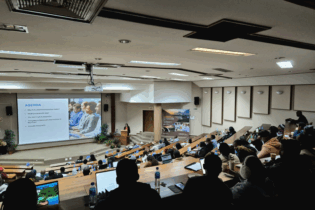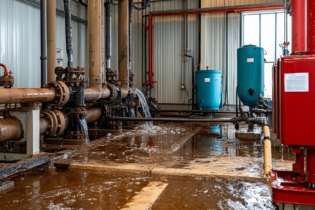Loadshedding, rising energy costs, limited landfill space, and pressure to reduce carbon emissions should be enough reasons for municipalities to consider biogas.
“While biogas alone will never solve the energy crisis, it can assist as a supplement in turning South Africa’s waste problem into an energy solution,” says Rosan van Wyngaard, manager: OSS Tendering, Veolia Services Southern Africa.
- Combined heat and power (CHP) system where the excess heat can also be used to heat digesters or in a composting process
- Gas engine to produce electricity only
- Boiler (steam boiler or hot water boiler)
Knowing the quantity and composition of the biomass entering the digester is central to the success of any biogas project. “Are there seasonal fluctuations? Will there be any changes in capacity in the foreseeable future (specifically considering the COD load)? Will there be any significant changes in the composition of the biomass? An anaerobic digester is robust, but may negatively react to massive fluctuations in the quantity and composition of biomass. Understanding and knowing what is fed into an anaerobic digester ensures the correct design specification, and makes the system easy to operate. There needs to be an understanding of important parameters (such as flow, pressure, siloxanes, COD, H2S) and how to react should anything happen in the system. It is easy to make interventions if an operator is aware that the biomass coming into the system is not within certain parameters,” she states.
Furthermore, is should be noted that bacteria within the digester is sensitive to biocides, and these compounds may impede biogas production. Another important consideration is that biogas is flammable, and various safety measures must be put in place. Size matters Unfortunately, generating biogas is not always economically feasible for smaller WWTPs in municipalities or on the industrial side. However, there is still an opportunity to combine waste streams with other entities and generate biogas as a combined effort. The more biogas generated; the more cost effective it is. “To generate biogas, the sludge needs a high COD loading. As a rule of thumb, approximately 0.35 m3 of biogas is generated from a 1 kg of COD. Every plant is unique, and many other parameters need to be factored in when deciding if biogas is a viable option – such as wastewater discharge tariffs and landfill tariffs, cost of electricity, water or steam (if biogas will be used to provide steam) as well as the potential of biogas generation from the sludge,” explains Van Wyngaard. Misconceptions While the benefits of biogas are obvious, the ‘yuck factor’ is a hindrance to the public acceptance of biogas. There needs to be extensive communication campaigns that encourages people to trust in the treatment process. Another misconception is that biogas is difficult to design and operate and it does not work. Biogas technology has been around for decades. It is a proven technology. “Some WWTPs in South Africa have digesters that are inactive. This is heart-breaking because it is infrastructure that can be put to use. There is this misconception that biogas did not work. But why did it not work? It is likely that the wastewater composition changed over the years and the operations side on the biogas digester did not react accordingly. Perhaps the WWTP was not operating as it should or the operators of the biogas digester were not adequately trained,” says Van Wyngaard. With its entire business centring around water, energy and waste, Veolia Services Southern Africa have extensive knowledge of biogas technology. They build and operate the entire supply chain, from the entire WWTP, to the actual digester and understand limitations of the pumps and boilers. “We are passionate about taking a waste product and turning it into a resource. Veolia has successfully implemented many biogas projects worldwide, including biogas projects in South Africa for industrial clients. We can also benchmark the characteristics of sludges and other biomass streams with facilities around the world,” adds Van Wyngaard. “There is a promising future for biogas technology. Suppliers of the engines, boilers and CHPs are progressively manufacturing more efficient, cost-effective equipment and as a result, the technology is becoming more accessible, and the entire biogas process is constantly improving. There are huge incentives for biogas in the European market where CO2is removed from biogas, the methane can even be pumped directly into the national gas grid for compensation. However, loadshedding, rising energy costs, limited landfill space, and pressure to reduce carbon emissions are clear drivers for the South African market,” concludes Van Wyngaard.







